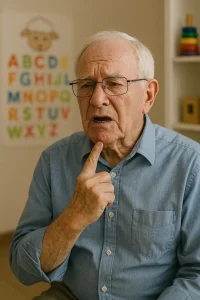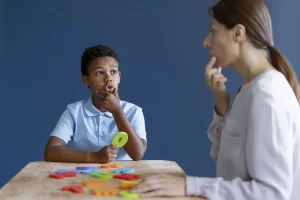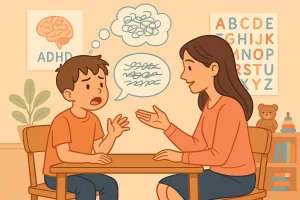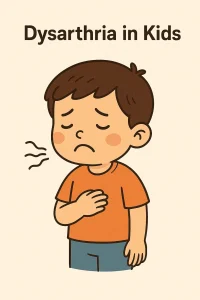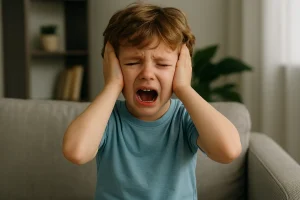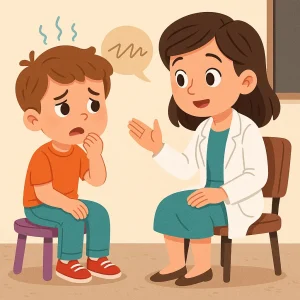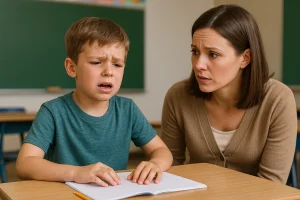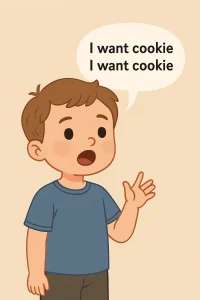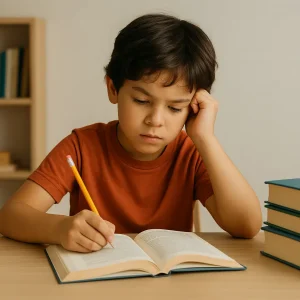Essential R Therapy Techniques You Should Know
Last Updated: August 23, 2024
The /r/ sound plays a significant role in clear and effective communication, yet it is one of the most challenging sounds to master in speech therapy. Whether you’re a parent concerned about your child’s speech development or an adult looking to improve your articulation, the struggle with the /r/ sound is a common one. The complexity of this sound lies in its various forms—like “ar,” “er,” and “or”—and the precise tongue placement needed to produce it correctly.
Why is this important? Mastering the /r/ sound is not just about clear speech; it’s about boosting confidence, improving social interactions, and ensuring that miscommunication doesn’t stand in the way of personal or professional success. This article will walk you through the essential R therapy techniques that can help overcome these challenges. From understanding why the /r/ sound is tricky to learning actionable techniques, this guide aims to make the journey to better articulation both manageable and effective.
Book Your Speech Therapy Session
Why Is the /R/ Sound So Tricky?
The /r/ sound is deceptively difficult to master. Unlike many other sounds in the English language, the /r/ requires precise tongue placement, subtle movements, and coordination of multiple parts of the mouth. This complexity makes it one of the last sounds that children typically learn and one of the most challenging to correct in speech therapy.
One of the key reasons the /r/ sound is so tricky is that it isn’t just one sound—it has multiple variations, each requiring a different tongue position. For example, consider the words “run,” “star,” and “fire.” The /r/ in each of these words sounds slightly different because it occurs in different positions within the word and is surrounded by different vowels and consonants. This variation means that mastering the /r/ sound involves learning not just one technique, but several.
The most common variations of the /r/ sound include:
- “Ar” as in “star”
- “Er” as in “her”
- “Or” as in “for”
- “Ir” as in “fire”
Each of these requires the tongue to move in specific ways. For instance, in the word “star,” the tongue needs to curl slightly upwards without touching the roof of the mouth, while in “fire,” the tongue flattens out more and is positioned slightly further back.
The challenge is compounded by the fact that the /r/ sound can appear at the beginning, middle, or end of words, and in combinations with other sounds like in “train” or “green.” These different contexts add layers of complexity, making it difficult for both children and adults to consistently produce the sound correctly.
Variations of the /R/ Sound and Their Characteristics
| Variation | Example Words | Tongue Placement | Description |
|---|---|---|---|
| Ar | Star, Car | Slight curl back, tongue near roof | The tongue curls slightly backward, approaching but not touching the roof of the mouth. This placement creates the distinct “ar” sound, often found in words like “star” and “car.” |
| Er | Her, Bird | Tongue higher in the mouth, near roof | The tongue rises higher in the mouth, close to the roof, creating a tighter and more central sound, as heard in words like “her” and “bird.” |
| Or | For, More | Tongue slightly back, middle of mouth | The tongue is positioned slightly back and centrally within the mouth, creating a rounded sound, as in “for” and “more.” |
| Ir | Fire, Tire | Tongue flattened, back of mouth | The tongue flattens and retracts towards the back of the mouth, producing the “ir” sound, which is common in words like “fire” and “tire.” |
Also Read: Speech Therapy Strategies for Kids: Mastering CH Words
Common Challenges in Articulation
When it comes to producing the /r/ sound, many people encounter significant challenges. One of the most common issues is rhotacism, where the /r/ sound is either distorted or replaced with another sound. For instance, a person might say “wabbit” instead of “rabbit” or “wun” instead of “run.” This can make speech difficult to understand, particularly when the /r/ sound occurs frequently in conversation.
Rhotacism is especially tricky because the /r/ sound varies so much depending on its position in a word and the sounds around it. The tongue placement required to correctly produce the /r/ sound is specific and can be hard to master without proper guidance. As a result, many people, especially children, struggle with this sound for years, often without realizing how it affects their overall speech clarity.
Early intervention is crucial in addressing these challenges. If issues with the /r/ sound are not corrected early, they can persist into adulthood, impacting social interactions, academic performance, and even self-esteem. Children who struggle with the /r/ sound might be teased by their peers or may have difficulty being understood by teachers and friends. This can lead to frustration and a reluctance to participate in conversations, further exacerbating the problem.
Delaying therapy can make these challenges harder to overcome as the incorrect speech patterns become more ingrained over time. Early and consistent practice with specialized R therapy techniques can help correct these issues before they lead to more significant communication barriers.
Essential R Therapy Techniques
When it comes to overcoming challenges with the /r/ sound, several proven techniques can make a significant difference. Each method is designed to address specific aspects of tongue placement and sound production, helping individuals master this tricky sound with consistent practice.
1. Karla Method
The Karla Method is a highly effective approach that combines visual and auditory cues to teach correct tongue placement for the /r/ sound. The technique involves using a mirror to help the individual see how their tongue moves while producing the /r/. By focusing on where the tongue needs to be, either curled slightly back or flattened depending on the variation of /r/, the method builds awareness and precision. This visual feedback, combined with listening to correct /r/ sounds, makes it easier to learn and replicate the correct tongue position, especially for those who struggle with rhotacism.
2. Bear Growl Technique
The Bear Growl Technique is both fun and practical, particularly for younger learners. It involves practicing the /r/ sound within the context of a growling noise, like “grrrr.” By exaggerating this growling sound, individuals can better engage the back of their tongue, which is crucial for producing a strong and clear /r/. This technique is often used in conjunction with words that start with “gr” or “kr,” such as “green” or “crab,” to help transition the growl into a more refined /r/ sound. The playful nature of this method makes it less intimidating, encouraging consistent practice.
3. Eureka Method
The Eureka Method offers a clever way to tackle the tricky “er” sound by adding a “y” sound before it. For instance, instead of trying to say “her” directly, the individual would start with “yer.” This slight adjustment naturally positions the tongue higher in the mouth, closer to where it needs to be for a proper /r/. Over time, as the tongue becomes accustomed to this position, the “y” can be gradually dropped, leaving a clear and correct “er” sound. This method is particularly useful for those who struggle with the rhotic vowel forms of /r/ found in words like “her” or “bird.”
4. Eee –> R Transition
The Eee –> R Transition technique is a simple yet effective way to move from a long “eeee” sound to the /r/ sound. By starting with the familiar “eeee” sound, individuals can then slowly pull their tongue back to transition into an /r/. For example, starting with “eeear” and slowly blending into “ear.” This method works well because it builds on a sound that is easy to produce, making the shift to the more complex /r/ smoother and less frustrating. It’s particularly helpful for those who need a step-by-step approach to achieving the correct tongue position.
5. L –> R Transition
The L –> R Transition technique is often considered a last resort but can be very effective for some individuals. In this method, the person begins by producing a long /l/ sound, like “lllll,” and then gradually moves their tongue back along the roof of their mouth until they reach the /r/ position. This technique tends to produce a retroflex /r/—where the tongue tip curls back—which can be harder to generalize into everyday speech, but it serves as a useful stepping stone for mastering the sound. It’s particularly beneficial when other methods haven’t worked, offering an alternative pathway to success.
Tools to Support R Therapy
Mastering the /r/ sound can be a challenging journey, but with the right tools, the process becomes much more manageable and even enjoyable. Whether you’re working with a child or refining your own speech, incorporating these tools can make a significant difference in your progress.
1. Visual Cues and Placement Tools
Visual aids play a crucial role in helping individuals understand the precise tongue placement needed for the /r/ sound. Simple tools like mirrors allow you to see your tongue’s position as you practice, ensuring it’s in the correct spot. Tongue models can be used to demonstrate the exact movement and shape required to produce a clear /r/. For younger learners, flavored tongue depressors can make the process more engaging by helping them focus on the areas of the tongue that need to be activated. These tools not only enhance understanding but also provide immediate feedback, which is essential for developing correct articulation habits.
2. Repetition and Practice
Consistent practice is the key to success in any form of speech therapy, and the /r/ sound is no exception. Regular repetition helps reinforce the correct tongue movements and gradually makes them more natural. Tools like articulation worksheets and flashcards are excellent for structured practice sessions. These resources allow for focused drills that target specific variations of the /r/ sound, whether it’s at the beginning, middle, or end of a word. The goal is to make the production of the /r/ sound automatic, so it becomes a natural part of your speech. Remember, the more you practice, the more confident you’ll become in using the /r/ sound correctly in everyday conversation.
3. Games and Interactive Techniques
Learning doesn’t have to be all work and no play. Incorporating games and interactive activities into your practice sessions can make learning the /r/ sound more enjoyable and less daunting. For example, rhyming games that focus on words with the /r/ sound can be both fun and effective. Try pairing words like “star” and “car” or “fire” and “wire” in a game format to encourage repetition. Other interactive methods, such as storytelling with flashcards or using apps designed for speech therapy, can add variety to your routine. These activities not only keep practice interesting but also help reinforce the /r/ sound in different contexts, making it easier to generalize to everyday speech.
Tips for Parents and Caregivers
Supporting your child’s speech therapy at home is crucial for making meaningful progress, especially when it comes to mastering the challenging /r/ sound. As a parent or caregiver, your involvement can greatly enhance the effectiveness of the therapy sessions and make the learning process smoother for your child. Here are some practical tips to help you create a supportive environment and encourage regular practice.
1. Make Practice a Part of Daily Routine
Consistency is key when it comes to speech therapy. Integrating practice into your child’s daily routine ensures they get the repetition needed to improve. Short, frequent practice sessions are more effective than long, infrequent ones. For example, you could spend a few minutes each day practicing the /r/ sound during breakfast or before bedtime. The more natural it feels, the more likely your child will engage positively.
2. Create a Positive and Encouraging Environment
It’s essential to create an atmosphere where your child feels comfortable and encouraged to practice. Celebrate small victories, and be patient with setbacks. Use positive reinforcement to motivate your child, such as praise or a small reward when they successfully produce the /r/ sound. Remember, progress can take time, so maintaining a positive attitude will help keep your child motivated.
3. Use Everyday Opportunities for Practice
Incorporate the /r/ sound into everyday activities. For instance, if you’re reading a book together, emphasize words with the /r/ sound, like “rain” or “car.” During playtime, you can make up games that focus on /r/ words, such as a scavenger hunt where your child finds objects that start with or contain the /r/ sound. These activities make learning fun and reinforce the sound in various contexts.
4. Be a Role Model
Children often learn by mimicking adults, so make sure you are modeling the correct pronunciation of the /r/ sound. Speak slowly and clearly when using words with the /r/ sound, and encourage your child to watch your mouth as you say these words. This visual cue can help them understand how to position their tongue and lips correctly.
5. Know When to Seek Professional Help
While at-home practice is important, some challenges with the /r/ sound may require professional intervention. If you notice that your child is struggling despite consistent practice, it might be time to consult a speech-language pathologist. Early intervention can prevent long-term issues and ensure that your child’s speech develops correctly.
Know more: What do Speech and Language therapists do?
Conclusion
Mastering the /r/ sound can be challenging, but with the right techniques and tools, it’s possible to make steady progress. We’ve covered several essential R therapy techniques, such as the Karla Method and Bear Growl Technique, which can help improve your articulation. Using visual cues, practicing regularly, and making the process fun with games are all ways to make learning the /r/ sound easier and more effective. Remember, it’s important to be patient and keep practicing, even if progress seems slow at times.
If you find that you need extra help or want more resources, Wellness Hub is here to support you. Our platform connects you with experienced speech-language pathologists who can offer personalized advice and therapy options tailored to your needs. Whether you’re just beginning or looking to fine-tune your skills, Wellness Hub provides the guidance and tools you need to achieve clearer, more confident speech.
Frequently Asked Questions:
1. What are some effective R therapy techniques?
Effective R therapy techniques include the Karla Method, Bear Growl Technique, Eureka Method, Eee –> R Transition, and L –> R Transition. These methods help improve tongue placement and articulation for a clearer /r/ sound.
2. Why is the /r/ sound so difficult to pronounce?
The /r/ sound is challenging because it requires precise tongue placement and has multiple variations, such as “ar,” “er,” and “or.” Each variation requires different movements, making it difficult to master.
3. How can parents help their child with R therapy at home?
Parents can support their child by creating a consistent practice routine, using visual cues like mirrors, and incorporating fun activities like rhyming games. Regular practice and positive reinforcement are key to progress.
4. When should I seek professional help for R therapy?
If your child struggles with the /r/ sound despite regular practice, or if their speech isn’t improving, it may be time to consult a speech-language pathologist (SLP). Early intervention is crucial for effective treatment.
5. Can the /r/ sound be corrected without professional therapy?
While some individuals can improve their /r/ sound through home practice, professional therapy is often needed for more persistent issues. An SLP can provide specialized techniques and guidance for better results.
6. How long does it take to see improvement with R therapy techniques?
The time it takes to see improvement varies depending on the individual and the consistency of practice. With regular practice and proper guidance, most people see progress within a few months.
7. Are there tools that can help with practicing the /r/ sound?
Yes, tools like mirrors, tongue models, articulation worksheets, and flashcards can be very helpful. Games and interactive techniques also make practicing the /r/ sound more engaging and effective.
8. What should I do if my child gets frustrated with R therapy practice?
If your child becomes frustrated, try to keep practice sessions short and fun. Use games, break down the exercises into smaller steps, and always offer positive reinforcement for their efforts.
9. Can adults benefit from R therapy techniques?
Absolutely. R therapy techniques are effective for both children and adults who struggle with the /r/ sound. Consistent practice and, if needed, professional guidance can help adults improve their articulation.
10. Where can I find more resources for R therapy?
Wellness Hub offers a variety of resources, including access to experienced speech-language pathologists who can provide personalized advice and therapy options to help improve your or your child’s speech.
About the Author:
Anuradha Karanam
Speech-language pathologist (7+ years of experience)
Anuradha Karanam is a skilled speech-language pathologist with over 6 years of experience. Fluent in Tamil, Telugu, Hindi, and English, she specializes in parent counseling, speech sound disorders, fluency assessment, and speech-language evaluations. Anuradha excels at working with children with developmental disorders, offering creative and effective therapy programs. Currently, at Wellness Hub, she holds a BASLP degree and is registered with the RCI (CRR No A85500). Her patience, ambition, and dedication make her a trusted expert in her field.
Book your Free Consultation Today
Parent/Caregiver Info:
Client’s Details:
* Error Message
